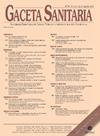2019冠状病毒病对欧盟国家身体活动的影响。
IF 1.5
4区 医学
Q3 HEALTH CARE SCIENCES & SERVICES
引用次数: 0
摘要
目的:分析流行病如何加剧卫生部门的社会不平等。方法:数据来源于Eurobarometer 97.3。我们使用广义结构方程模型(GSEM)方法进行分析。结果:社会经济地位较低的人,被认为是社会阶层较低的人,生活在体育锻炼基础设施较差的地区,以及社会不平等程度较高的国家,不太可能在闲暇时间进行体育锻炼。此外,这些人更有可能因COVID-19而中断身体活动。相比之下,社会经济地位较高的人,被认为是上层阶级,生活在有机会进行体育活动的环境中,生活在社会不平等程度较低的国家,更有可能属于那些在空闲时间增加体育活动频率/在闲暇时间增加体育活动频率的人。结论:与个人变量(社会地位和主观社会阶层)和背景变量(基础设施和基尼指数)相关的休闲时间身体活动普遍存在不平等,这种不平等随着COVID-19大流行而显著加剧。本文章由计算机程序翻译,如有差异,请以英文原文为准。
The influence of COVID-19 on the practice of physical activity in the European Union countries
Objective
Analyze how pandemics contribute to the increase in social inequalities in the health sector.
Method
Data are taken from Eurobarometer 97.3. We use the Generalized Structural Equation Model (GSEM) methodology for this analysis.
Results
People with lower socio-economic status, considered to be of lower social class, living in areas with worse infrastructure for practicing physical activity, and in countries with high levels of social inequality, are less likely to engage in leisure time physical activity. In addition, these individuals are more likely to interrupt physical activity practices as a result of COVID-19. In contrast, people of higher socio-economic status, considered to be of upper class, living in contexts where there are opportunities for physical activity, and in countries with low levels of social inequality, are more likely/ to belong to the group of those who increased the frequency of practicing physical activity in free time/ to have increased the frequency of their leisure time physical activity.
Conclusions
There are widespread inequalities in leisure time physical activity linked to personal variables (social status and subjective social class) and contextual variables (infrastructures and Gini Index) that were significantly aggravated with the COVID-19 pandemic.
求助全文
通过发布文献求助,成功后即可免费获取论文全文。
去求助
来源期刊

Gaceta Sanitaria
医学-公共卫生、环境卫生与职业卫生
CiteScore
4.10
自引率
5.30%
发文量
80
审稿时长
29 days
期刊介绍:
Gaceta Sanitaria (Health Gazette) is an international journal that accepts articles in Spanish and in English. It is the official scientific journal of the Sociedad Española de Salud Publica y Administración Sanitaria (Spanish Society of Public Health and Health Administration) (SESPAS).
The Journal publishes 6 issues per year on different areas of Public Health and Health Administration, including:
-Applied epidemiology-
Health prevention and promotion-
Environmental health-
International health-
Management and assessment of policies and services-
Health technology assessments-
Health economics.
The editorial process is regulated by a peer review system. It publishes original works, reviews, opinion articles, field and methodology notes, protocols, letters to the editor, editorials, and debates.
 求助内容:
求助内容: 应助结果提醒方式:
应助结果提醒方式:


